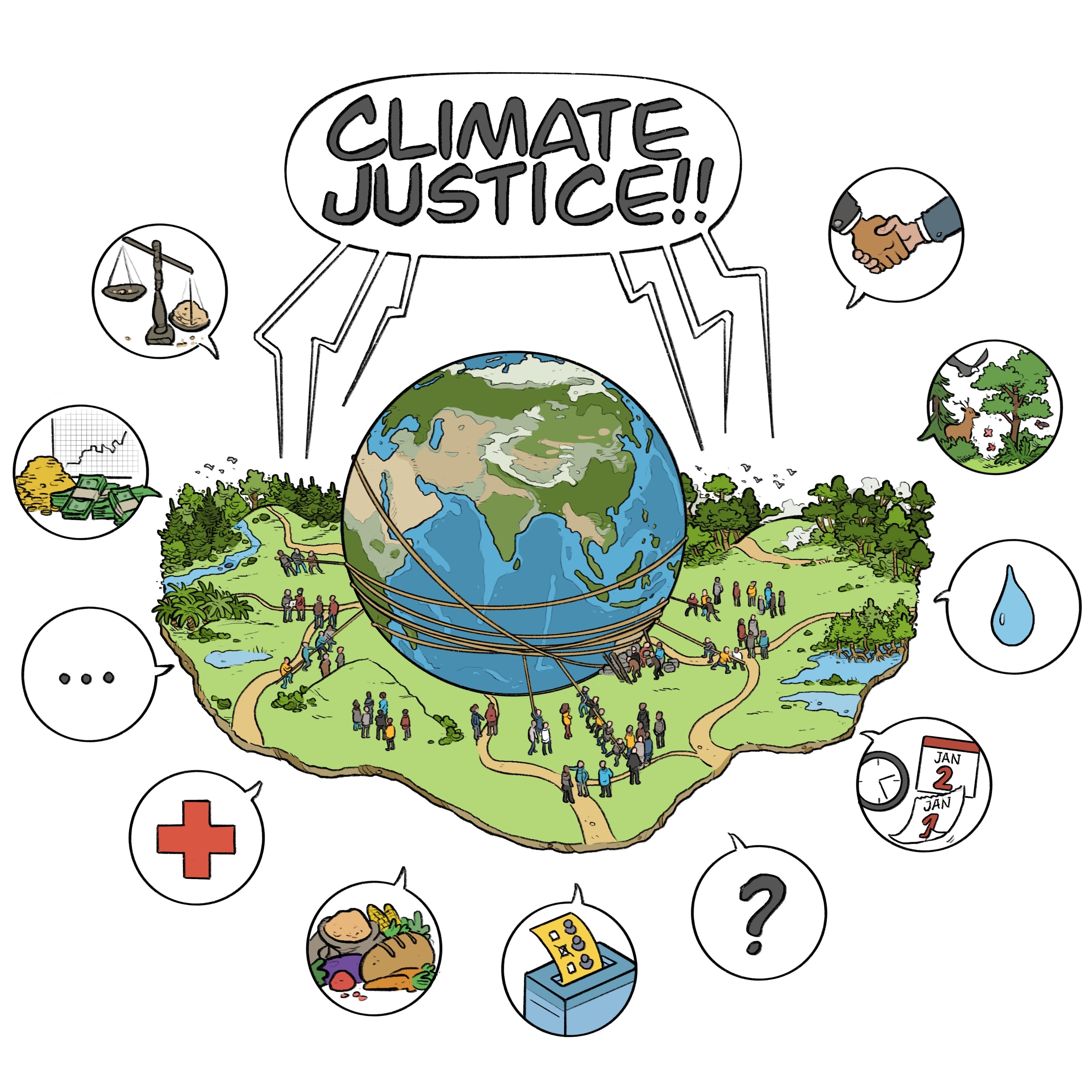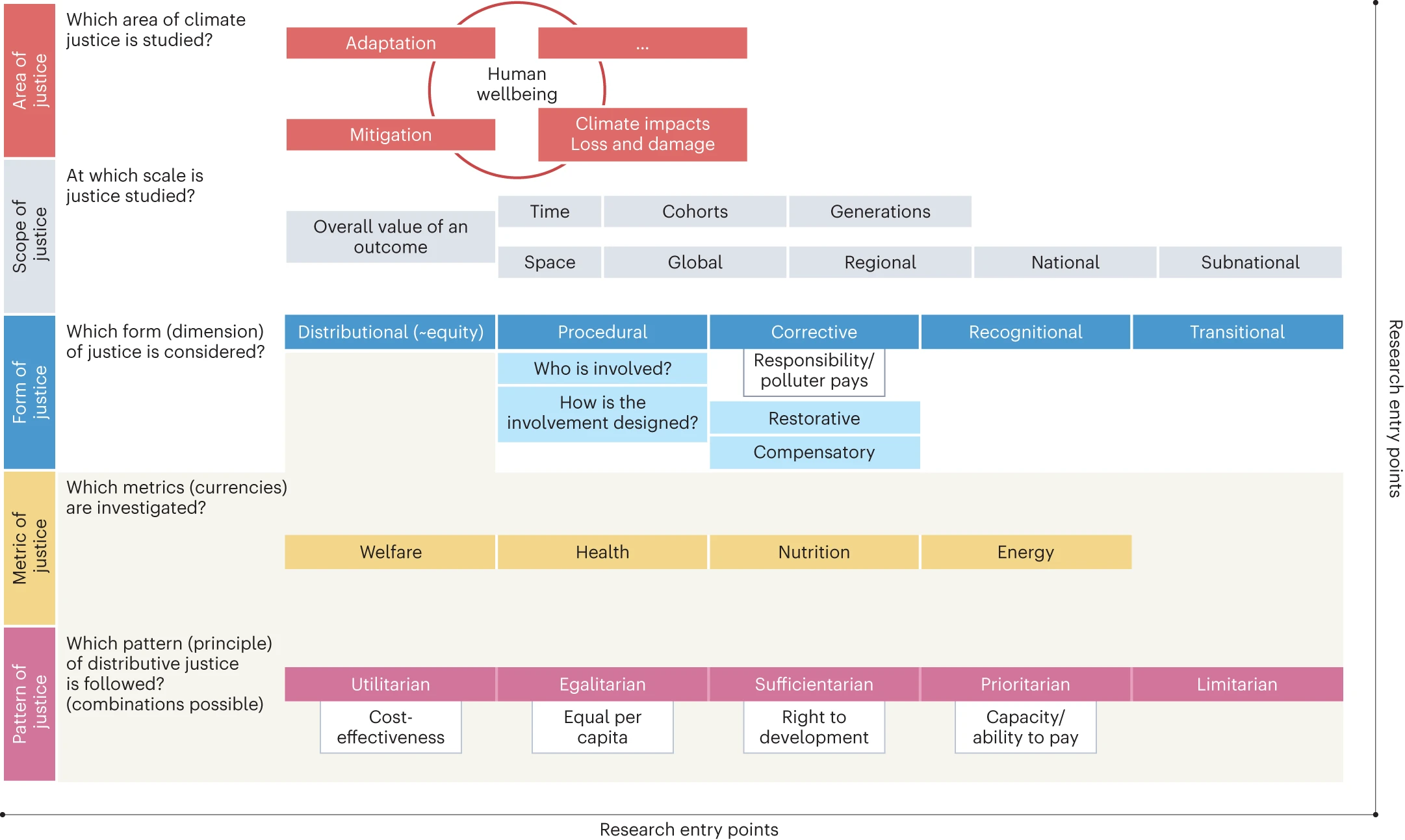
IIASA researchers Caroline Zimm and Kian Mintz-Woo explain the benefits of a recently developed operational framework that aims to bring clarity to the often implicit and varied justice considerations in climate mitigation scenarios, fostering a shared language and understanding to enhance decision-making processes in the intricate landscape of climate policy.
Imagine you are on weekend trip with a group of friends including some (maybe new) plus ones, kids, and dogs. On the first evening, you sit together to discuss what everyone wants to do the next day. Some of the group are still unpacking and can’t join the discussion, some new members stay quiet as they don’t know the dynamics of the group yet… you get the picture. Some may want to get up early in the morning to catch the sunrise on the peak of the nearby mountain. Some might prefer to sleep in, take the gondola up later in the day, and enjoy the scenery and a nice meal at sunset. And some others might prefer to stay in the valley and explore a famous lake and waterfall or stay at home. On top of all this, we haven’t even considered other variables like the weather, available equipment and fitness levels, or gondola and restaurant opening times—we will stop here.
The point is that everyone has their own idea of what a perfect day in the mountains should entail.
Clearly, a map of the region would be useful for everyone to orient themselves on their way to their desired destination, to help prepare for the outing, to understand where others think about going, and if their paths will cross or not.
Now imagine that this scenario is not a fun hiking trip with friends, but a (perhaps less fun) meeting of policymakers, civil society organizations, and industry representatives from different countries debating decarbonization and human development in a changing climate and how to go about it. Everybody has different preferences, different capabilities, and different opinions on what needs to be done when and how, and what would be “fair”.
The diverse questions on the justice of climate change and decarbonization have led to vivid public and scientific debates on the design of just transitions, differentiated impacts, and the responsibilities of the parties involved. This was highlighted again at the recent climate negotiations during the meeting of the Conference of the Parties (COP28), which now includes a novel agreement on a fund for climate losses and damages. As justice is conducive to more ambitious climate policy and its acceptability, it is a practical and urgent concern for different disciplines working on decarbonization.
While the climate justice literature is growing, no consistent approach or guide exists as to how we should incorporate and consider justice in mitigation scenario research, given all the tradeoffs across policy options. Scenarios already reflect some justice considerations, but these are often not explicit or explained in detail. Different terms and indicators are used interchangeably. This leads to a lack of clarity, consistency, and comparability. This confusion across researchers and users of research makes the communication of results challenging and increases the likelihood of misinterpretation and misunderstandings.
This is where our research within the IIASA Just Transitions to Net-zero Carbon Emissions for ALL Strategic Initiative (JustTrans4ALL) comes in. We are proposing an operational framework that is grounded in philosophical theory and clarifies key concepts and terminology (see figure below). The framework will help everyone to navigate the justice landscape. Modelers and users of scenarios can use it to understand underlying justice assumptions and related implications in a uniform and structured manner using the same language.
The area of climate justice is shown (red), followed by the scope of justice (space and time, grey) and the form of justice (blue). Within distributional justice, different metrics (yellow) and patterns (pink) can be combined for which examples are given. We have added the principles of equity (white) used in IPCC reports by the IPCC to study mitigation effort sharing and remaining emissions quota to illustrate where most of the equity discourse in mitigation scenarios has happened so far. Depending on the research question, the entry point to the framework and focus of the study may differ, and additional elements may be investigated.
As proof of concept, we are applying our framework to climate mitigation scenarios and literature. We are identifying new areas of research that go beyond the established focus on burden sharing and including new metrics of service provisioning as well as different forms and patterns of justice. This research includes:
- Ensuring that researchers are aware of the built-in justice assumptions in their methods and tools, and that their research designs have justice implications.
- Highlighting that existing mitigation scenarios implicitly and explicitly speak to different forms of justice, predominantly distributive justice focusing on emissions and economic impacts.
- Highlighting that egalitarian and utilitarian patterns of distributive justice dominate, with utilitarian assumptions often being adopted without recognition of the normative commitments.
- Addressing the fact that there is limited research in terms of sufficientarian and limitarian patterns of justice in mitigation literature.
- Extending distributive justice analysis in mitigation scenarios to cover wellbeing and access to decent living services.
- Working towards enhancing procedural justice in future mitigation scenarios
We believe that creating mitigation scenarios that explicitly consider diverse justice considerations can improve their role in decision making processes as well as their legitimacy among citizens. The framework, however, does not help to explain what is feasible or what is more or less just. We hope that researchers from different disciplines working on decarbonization will use our framework, for instance, when working with stakeholders or comparing different scenarios. We hope this framework helps the next assessment cycle of the Intergovernmental Panel on Climate Change (IPCC), which could benefit from incorporating more justice-related research.
In the meantime, hike-on!
Further reading:
Zimm, C., Mintz-Woo, K., Brutschin, E., Hanger-Kopp, S., Hoffmann, R., Kikstra, J.S., Kuhn, M., Min, J., Muttarak, R., Pachauri, S., Patange, O., Riahi, K., Schinko, T. (2024). Justice considerations in climate research. Nature Climate Change DOI: 10.1038/s41558-023-01869-0
Note: This article gives the views of the authors, and not the position of the IIASA blog, nor of the International Institute for Applied Systems Analysis.

